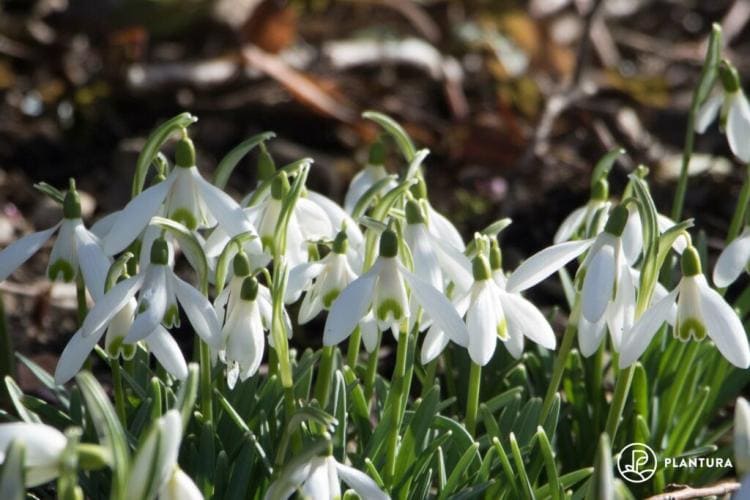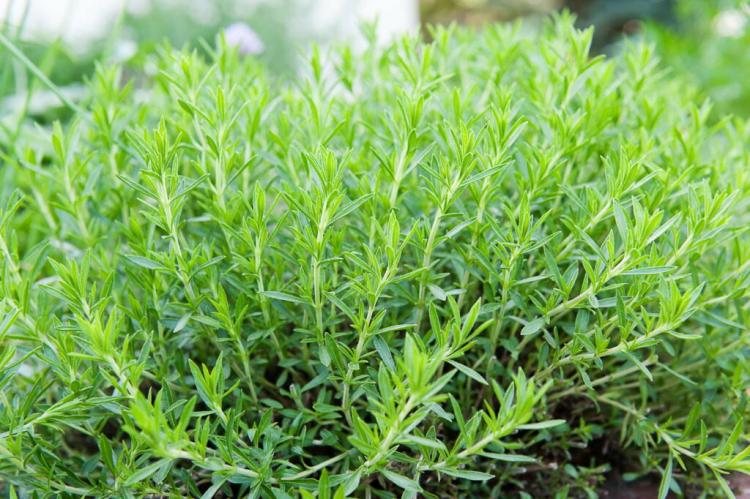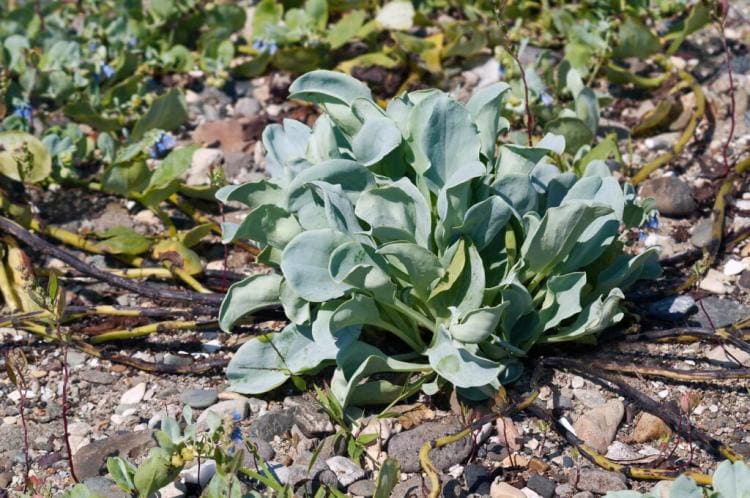Frangipani care: watering, fertilizing & overwintering
Frangipani ( Plumeria ) are popular ornamental plants. We give expert tips on the care, fertilization and wintering of the beautiful scented plant.
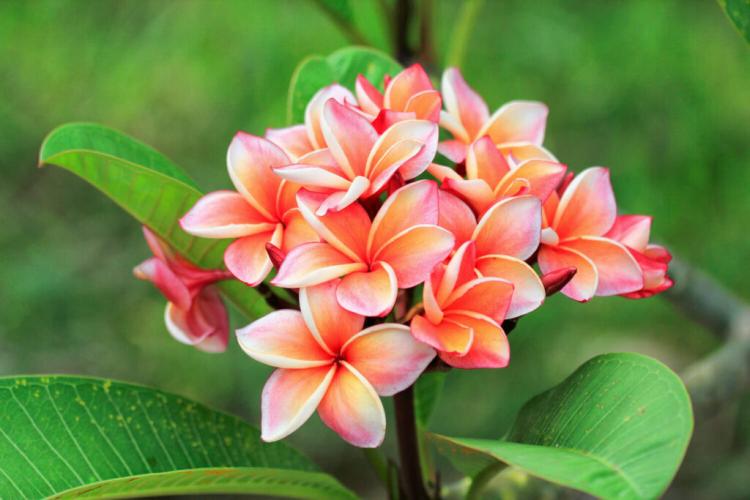
Frangipani not only look beautiful, they also smell good [Photo: noprati somchit / Shutterstock.com]
As a tree of tropical origin, the Frangipani ( Plumeria ) is a real eye-catcher in our latitudes. As a potted plant, it is becoming increasingly popular in many gardens. Originally from the Caribbean and Central America, the fragrant plant can be found in this country on terraces, balconies or in winter gardens. The striking flowers show unusual color combinations from yellow to white to pink and fascinate with their beauty. While the Frangipani reaches a height of several meters in their homeland, it remains smaller here due to our mild and cool climate. Their sensitivity to cool temperatures therefore also prevents them from wintering outdoors or putting them in the garden. The following tips for caring for and wintering the Frangipani should help to provide the exotic species with sufficient supplies and to keep them fit during the cold season.
Fertilize and water frangipani
Adequate fertilization is important for the growth of the Frangipani, so there are a few tips to keep in mind. It is recommended to fertilize every 1 to 2 weeks so that the tree has enough nutrients available during the growing season – especially before the shoot in April / May through to September. It is advisable to add the fertilizer directly when watering. A fertilizer with a high nitrogen content is suitable for optimal growth of young plants. In order to support the formation of the fragrant frangipani flower, on the other hand, it makes sense to use a fertilizer with a high phosphate content. This allows the flowers to come into their own despite the mild climate. However, you should only fertilize until October, as the plant will then go into hibernation. Our Plantura organic flower & balcony fertilizer is ideal for the Frangipani, an organic liquid fertilizer that is simply administered via the irrigation water every one to two weeks and contains all the necessary nutrients.
The Frangipani is a relatively uncomplicated companion when it comes to drought: in summer it should be watered daily, preferably in the morning or evening. On particularly hot days, it can also be refreshed twice with the cool water. Make sure that you water directly on the trunk and not moisten the leaves – this could lead to fungal infections and burns from the sun's rays! Nevertheless, it is better to pour less than too much. Because the Frangipani tree is sensitive to permanently moist soil. It is therefore important not to create waterlogging under any circumstances. It is best not to use a coaster outdoors so that the water can always drain away.

In summer, frangipani also thrive in our latitudes [Photo: Jalal Collection / Shutterstock.com]
Hibernate Frangipani
As soon as it gets cooler outside in autumn, the Frangipani have to go into the house or another warm place! Unfortunately, due to its tropical origin, the plant is not hardy. Just like our native trees, it also needs a hibernation. So don't be alarmed if it loses its leaves in autumn. This is quite normal and heralds the dormant phase for the plant. From this point in time (usually in October or November) you should stop fertilizing until the leaves shoot in spring, as the plant will not grow during that time. Watering should also be stopped during this time, even if the trunk is already wrinkled. If the water supply is superfluous, the Frangipani threatens the risk of rot in the root area. In addition, watering over the winter reduces the chance that the plant will bloom for the next year.
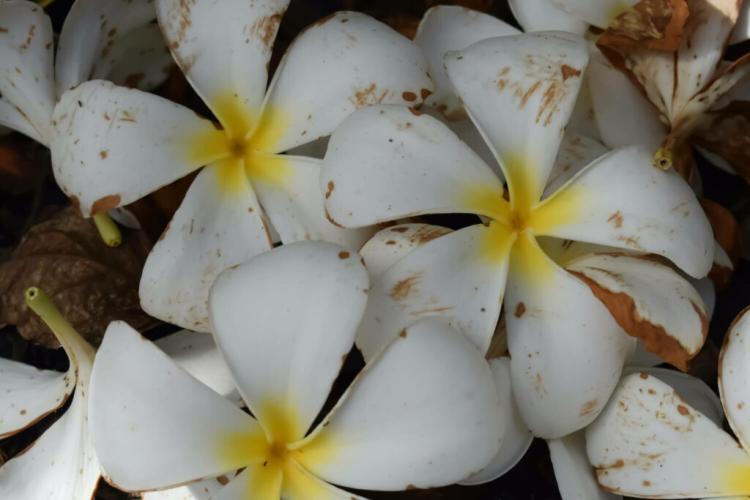
When winter approaches, the plumeria loses its bloom [Photo: Yoga Pristyanto / Shutterstock.com]
For the Frangipani to be successful in wintering, the climate must also be right: a temperature between 10 to 15 ° C is suitable for the optimal environment. Above all, temperatures below these values should be avoided, as the Frangipani is very sensitive to cold. A sheltered location is also best. Whether it gets a lot or little light is not so important because it sheds its leaves in autumn and no photosynthesis takes place.
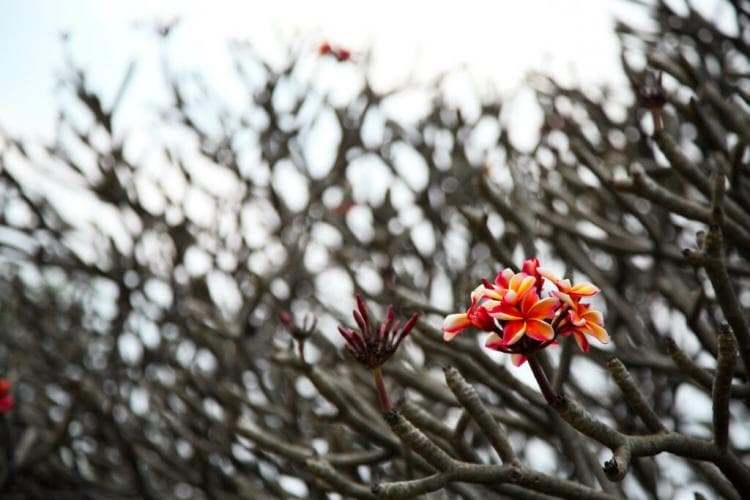
The Frangipani loses its leaves in winter [Photo: meepoohfoto / Shutterstock.com]
Here are the most important points to consider when wintering the Frangipani:
- Temperature between 10 and 15 ° C
- Protect from cold drafts
- Don't pour
- Do not fertilize
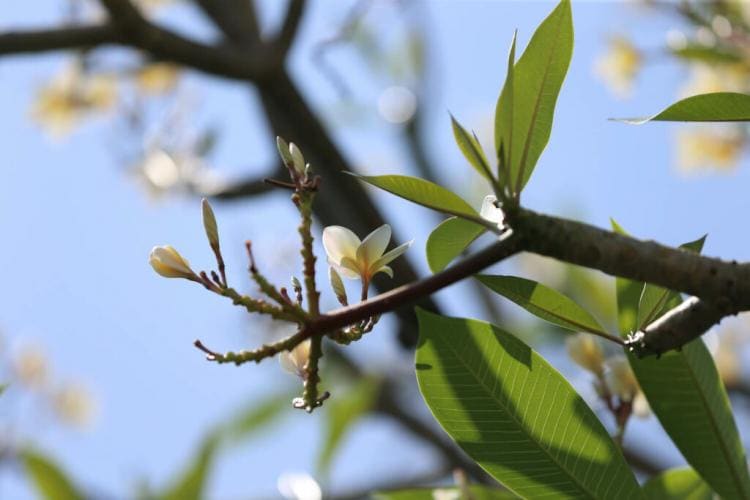
The frangipani buds sprout again in spring [Photo: SAMMYEK / Shutterstock.com]
When the days get longer again and spring comes, the frangipani also makes itself felt with fresh foliage. The hibernation usually ends in April, from then on the plant should be watered again. But be careful: you should initially only give water once or twice a week. With these tips it won't be a problem to get the frangipani through the winter well. On warm days it can move outside again, but you should still be careful of late night frosts. These are possible until mid-May and can also occur unexpectedly. That is why the exotic deciduous tree should move to a sheltered place in the house in the evening.
If you are looking for more plants that enchant with their scent, then you will definitely find it here. We have put together the most beautiful scented plants for the balcony and garden for you.

